Bird vocalizations range from the short clicks of swifts; to the quavering whistles of the tropical tinamous; to the long, tinkling melodies of wrens; and to the seemingly endless imitations of other birds by mockingbirds and lyrebirds. They range between pitch from deep infrasounds to high pitches sounds inaudible to older human ears. Some bird species are virtually silent; others are garrulous. At one extreme, Mute Swans, Turkey Vultures, and Greater Rheas merely hiss and grunt occasionally. At the other extreme are the seemingly unlimited repertoires of mynas, parrots, mockingbirds, and skylarks.
Here we get into details about,
the pre‐sunrise burst of singing that greets early‐rising bird watchers,
the singing abilities of many female birds,
the coordinated singing performance conducted by mated pairs of some species,
the tendency of some birds to mimic the sounds of species other than their own and
the gymnastic efforts of birds that capable of singing in flight.
Dawn chorus
Some of the most remarkable avian singing occurs at dawn. Most day‐active birds are silent throughout the night, presumably roosting quietly somewhere on their territory. Beginning an hour or so before sunrise, birds of many species begin their dawn chorus.
Who begins the dawn chorus and how it grows
Typically, the chorus begins with a burst of songs from the earliest singing species. As the dawn progresses, other species join the chorus in a rather predictable sequence. The order in which species join may be determined by differences in how well species can see in dim light. According to this hypothesis, a bird will not begin singing until there is enough light for it to see well enough to do whatever it must be able to do while singing, such as detecting predators that might notice a singing bird.
How does size of the eyes of birds related to early singing?
Evidence in support of the hypothesis comes from a study that measured the size of the eyes of representative individuals of each of 57 passerine species. Birds with larger eyes have larger pupils to let in light, so birds with bigger eyes can see better in dim light.
The researchers also measured the time, relative to sunrise, at which each species began singing at several sites in Europe. These data showed that species with larger eyes began singing earlier, probably because they were able to see well earlier.
Study on a complex forest revealed a fascinating singing behaviour
A similar study of a tropical dawn chorus in an Ecuadorian forest revealed a relatively more complex pattern. There, the earliest passerine singers were species that lived high in the forest canopy, where light first penetrated at dawn. Singing began progressively later at lower levels in the forest vegetation and began the latest in species that foraged on the heavily shaded forest floor. Within each level of the forest, start time and eye size were correlated, just as in the temperate forest.
Rate of singing during dawn
The quantity and often the quality of singing during the dawn chorus differ markedly from singing during the rest of the day. In many species, singers use the same kind of songs that they sing later in the day but sing them at a markedly faster rate.
For example, a Buff‐breasted Flycatcher in a neotropical forest sings the same song types throughout the day, but its dawn singing is four times faster than its singing later in the day.
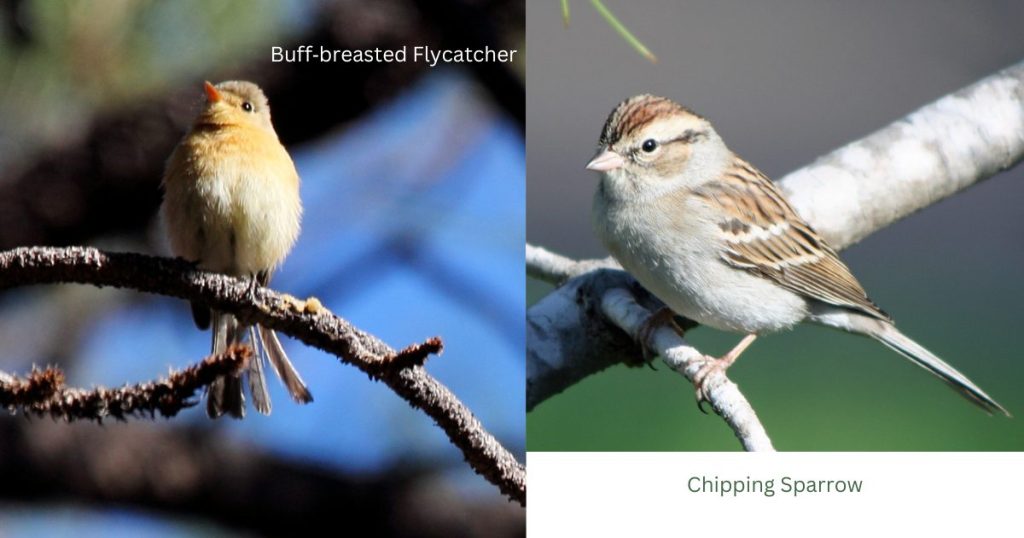
Other species, such as the Chipping Sparrow, give dawn performances that are qualitatively different from their daytime singing.
An interesting singing story of some birds singing same song throught the day
At dawn, a male sparrow often sits on the ground near a male from a neighboring territory and delivers bursts of song as if they were being shot from a machine gun. He will sing two or three elements of a song, pause very shortly, sing another burst followed by a pause, and so on. This dawn vocal display seems highly energized, even frantic. In contrast, during singing in the daytime, a male Chipping Sparrow sits on an exposed perch high in a tree and produces a longer version of his song that lasts almost 2 seconds. Between songs, the sparrow pauses for 10 seconds or more, producing a more leisurely, relaxed display.
Reed Buntings in Europe also sing differently at dawn than they do later in the day. At dawn, a paired male sings a nearly continuous stream of 2.5‐second songs, with only a brief, 0.5‐second pause, or even no pause at all, between songs. Later in the morning, this fast‐paced dawn bout gives way to singing at a more relaxed pace. During daytime singing, males sing much more slowly (pausing 5–10 seconds between songs) and also sing shorter songs (about 1.5 seconds long).
Singing story of some birds singing different song during the day
Other species use entirely different songs at dawn than during the day. Certain North American wood warblers that have two song categories use their aggressive songs for the first 30–60 minutes of the morning and then lapse into a slower-paced delivery of their other song. A male Yellow Warbler, for example, uses about 12 song types delivered with immediate variety during his dawn chorus, and after half an hour or so he switches to his single daytime song type. The male reverts to songs of his aggressive dozen during daytime encounters with other males, but the singing is never as energized as at dawn.
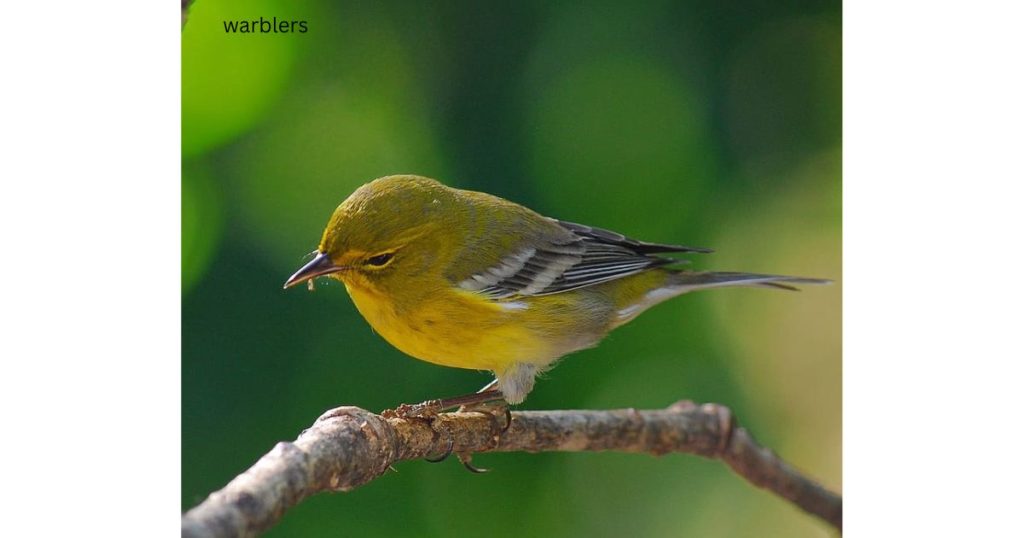
Why is there such a burst of energetic singing at dawn?
Purposes for singing at dawn?
Researchers have proposed many ideas for why dawn singing is so dramatic. Perhaps males sing at dawn because that is the best time to attract females. Also, conditions at dawn are often calm, so song at that time may carry over the maximum possible distance. Furthermore, the dawn chorus occurs at a time of day too dark for effective foraging, so singing then rather than later is an efficient use of time. Or perhaps singing at dawn is especially important for territory defense; dawn follows the longest period of inactivity and predation occurs at night, too, so dawn might be an important time for a bird to proclaim, “I am still alive” and “This territory is still mine.” The dawn chorus probably serves multiple purposes, with the relative emphases undoubtedly varying from species to species. More generally, the dawn chorus may serve as a ritualized display that establishes hierarchies and broadcasts information about them.
Female song
Why there is common misconception only male bird could sing?
A common misperception especially among people who spend most of their time in the north temperate zone is that song is primarily a behavior of male birds. This incorrect perception that song is solely a male trait also arises in part because most bird song research has been conducted on species that breed in the north temperate zone, where male‐only song is more prevalent. Overall, song is indeed more common in male birds, but females of hundreds of bird species also sing as part of their normal activities.
Why do female birds sing?
Many of the functions of the female song parallel those of males: females use song to defend territories against members of both sexes, to attract and communicate with their mates, and to advertise their availability and condition. For example, studies of Alpine Accentors in France have shown that females use songs to attract male mates and that males can distinguish between the songs of females and males. The female song is particularly prevalent in birds in tropical regions around the world. In many such species, females sing less frequently and more quietly than males, but in other species, the songs among females are common and conspicuous.
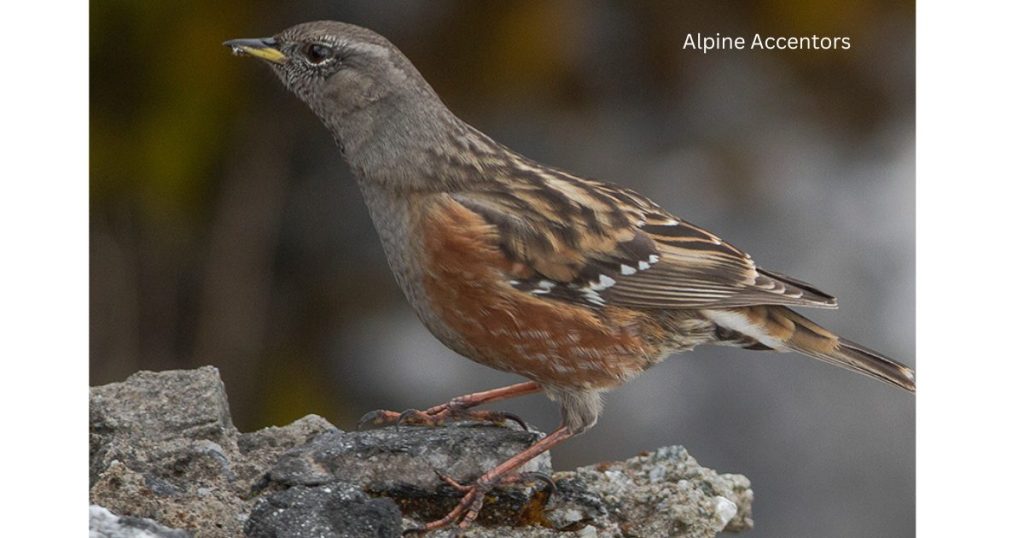
Female exclusive songs
For breeding
Some functions of the song are particular to females. Female birds may use song to communicate about their reproductive state by letting potential mates (both their social mate and other nearby males) know when they are in their fertile egg‐laying period. For example, studies of the Pied Bush-Chat in Uttarakhand (India) have shown that females sing in various contexts, including in duets with their mates and during antagonistic interactions with other females. Their songs are most common during the early parts of the breeding cycle, with female Pied Bush‐Chats singing only rarely once they are incubating eggs.
For fledgling
At a later stage of the nesting cycle, some female birds may similarly use song to communicate with multiple fledglings that have left the nest. In Black‐headed Grosbeaks at a breeding site in Utah (USA), family groups of parents and fledglings start to wander away from their home territory about 3 weeks after the young birds leave the nest. These family groups use vocalizations which include songs from both parents to stay together as they move through thick vegetation, and experiments have shown that the young birds are more responsive to songs of their parents than to songs of unrelated grosbeaks.
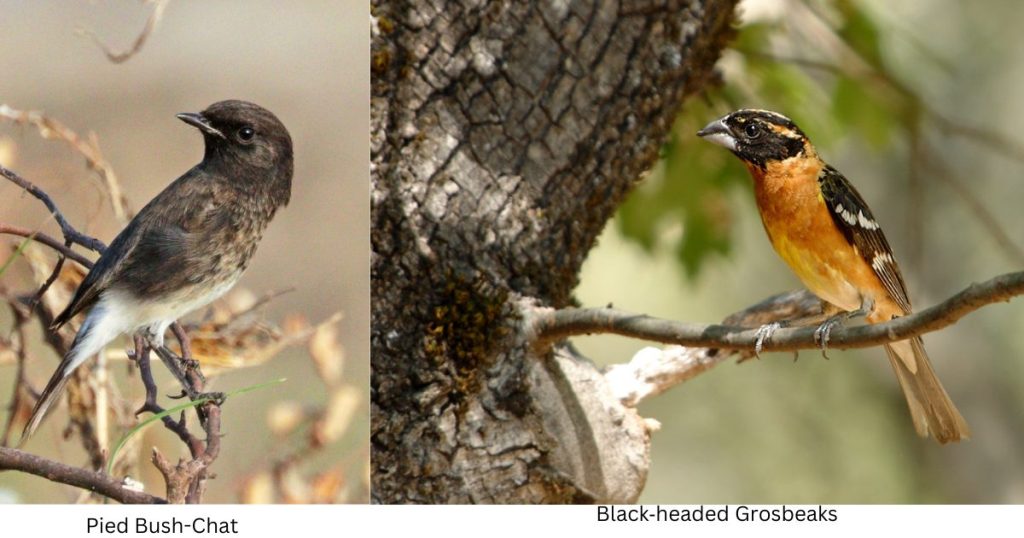
Duetting
How male coordiante with female while singing?
The members of a mated pair of birds communicate with each other frequently, and in many species the communication includes vocal signals. In some species, these vocal exchanges are simply overlapping bouts of calling, but in others, they involve coordinated singing. Such coordinated duets differ among the species in which they occur. The difference can be in how often mates join during duets, in the relative complexity of the male and female sounds, also how precisely the vocal exchanges are timed, and the overlap between the male and female songs (from synchrony to antiphony, in which the male and female rapidly alternate their contributions).
The Carolina Wren, a common songbird of the eastern USA, has a simple form of duet. Male Carolina Wrens sings a loud, resounding “teakettle‐teakettle‐teakettle,” each song consisting of a complex syllable (“teakettle”) repeated several times. On occasion, the female appends to this song a coarse rattle or “churr” unmistakably the female Carolina Wren will announce her social bond to her mate. The quality of male and female utterances differs markedly: females are only occasional participants, and the timing of the male and female contributions does not appear to be well coordinated.
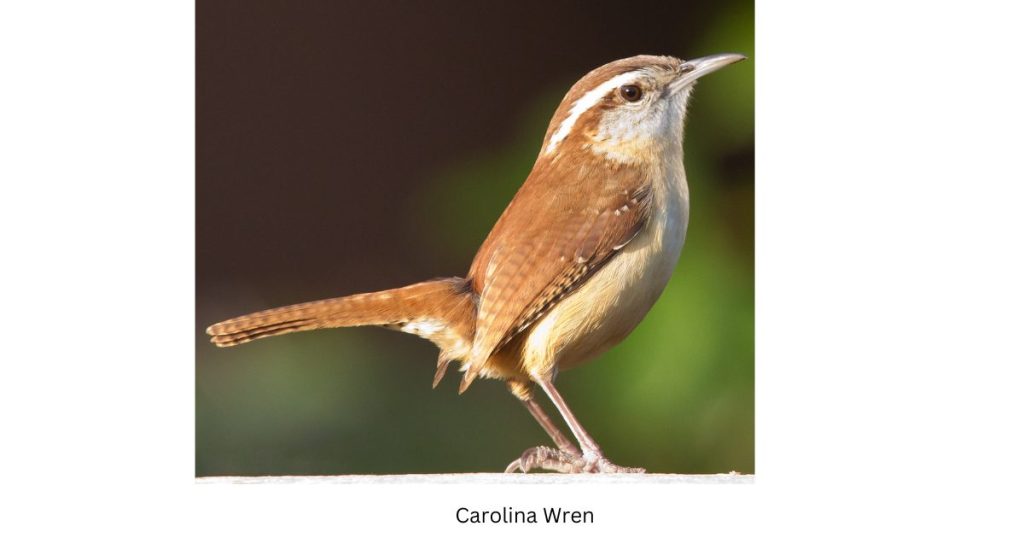
Far more extraordinary are the complex, highly coordinated duets sung by some related wren species. So coordinated are some of these singing efforts that a human listener can’t differentiate between the male and female contributions unless the two singing birds are separated by a considerable distance. Among the Cantorchilus wrens of the neotropics, the Buff‐breasted, Bay, Riverside, and Plain Wrens sing duets of this sort. In these duets, male and female contributions are equally complex, exchanges are highly precise and coordinated, and both male and female participate frequently.
Duetting among long term pairs
Most duetting bird species live in the tropics, where duetting also occurs in various species of parrots, woodpeckers, and weavers, among others. The occurrence of duetting in these settings is almost certainly related to the long‐term pair‐ bonds of many tropical species. In these species, pairs maintain prolonged monogamous bonds and remain on their territory year-round. The two members of a pair thus have a long‐lasting relationship and a long‐term shared investment in a territory; these factors may foster a communication system in which both partners benefit from sending highly coordinated signals that help them defend their joint territory and maintain their pair bond.
Mimicry
Mimicry is a fascinating consequence of song learning: birds of some species learn not only their songs but also the songs of other species. In North America, the Northern Mockingbird is perhaps the best-known example of an accomplished mimic: male mockingbirds sing up to 200 different song types, and a considerable number are copied from other bird species. Renowned mimics elsewhere include the lyrebirds of Australia and Lawrence’s Thrush in South America.
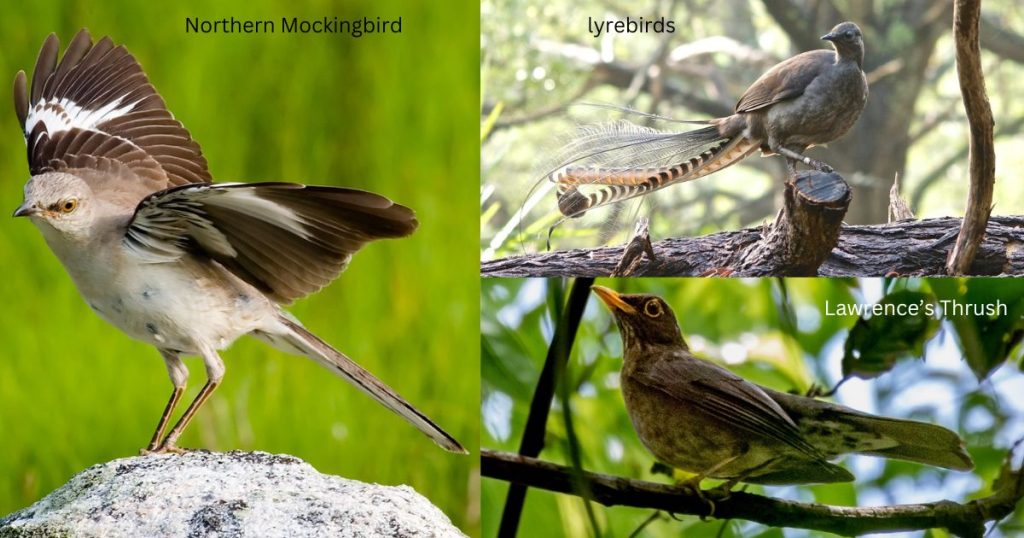
Species not typically are mimics also occasionally learn the vocalizations of other species. In North America, Blue Jays imitate the calls of various species of hawks, for example. European Starlings are excellent mimics.
Does starlings mimic other animals and frog?
A study of starlings in five European populations documented high‐fidelity mimicry of more than 70 different sounds, including a cat’s meow, a frog’s call, a squeaky door, and the vocalizations of bird species ranging across the taxonomic spectrum.
How birds pay for their learning mistake?
In some species, mimicry occurs only extremely rarely and seems to be a maladaptive side effect of song learning. Well‐documented examples from North America include a Vesper Sparrow singing songs of the Bewick’s Wren, a Chestnut‐sided Warbler singing Indigo Bunting songs, and a Cerulean Warbler singing Hooded Warbler songs. In all of these cases, the males who learned the songs of the wrong species’ remained unpaired, thereby paying a fitness price for their learning error.
Benefits of mimicry
For species in which mimicry is routine, researchers have proposed several hypotheses to explain its occurrence. One hypothesis is that mimics use other species’ songs to help exclude them species from the mimics’ territories. This possibility of this has not yet been thoroughly investigated.
Or perhaps learning the songs of other species is simply an easy way for a songbird to develop a diverse repertoire of novel sounds, which might be used to impress a female.
This idea is supported by studies of Marsh Warblers at breeding sites in Belgium; these warblers learn and mimic both the songs of other local breeding birds and those of species that they encounter only on their overwintering sites in Africa during their non‐breeding season.
Flight songs
Although most birds sing while perched, some sing in flight. Many shorebirds produce long, complex songs while in flight above their breeding grounds. Sky Larks impress us by delivering their seemingly unending soliloquy from great heights. Hummingbirds, too, often combine flight and sounds which can combine vocalizations with sounds produced by their wings and tail in their impressive courtship displays.
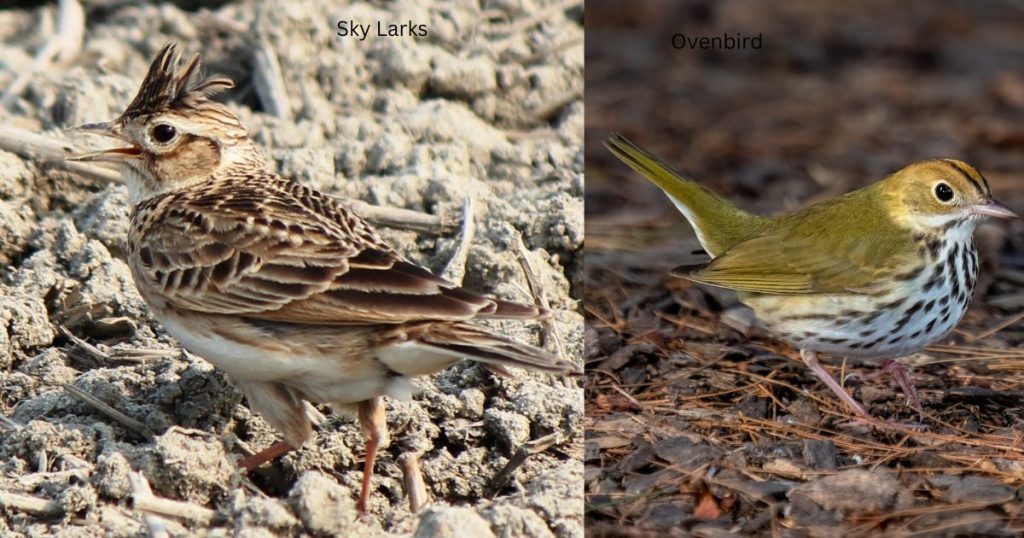
Flying is physically demanding, so singing in flight is undoubtedly more difficult than singing from a perch.
Why do some birds do it?
In open country, birds may have few high perches from which they broadcast their songs, so singing in the air may be the best-known option. Hence, most birds with flight songs are birds of grasslands or the arctic steppe. The extra energy required to deliver the songs in flight must be rewarded with an increase in the area over which the song can be heard.
However, some flight‐singing species do not quite fit this neat explanation for flight songs. The Ovenbird, a common warbler of forests in northeastern North America, is a prime example. Its flight song that heard near dawn and dusk, sometimes even during the middle of the night, when an Ovenbird launches itself from near the forest floor up into the canopy and sometimes beyond. Elements of the normal Ovenbird song are embedded in the prolonged, jumbled stream of the flight song, but this bird’s vocal performance during flight is very different from its normal earthbound sounds.
The Ovenbird’s flight song is just one of a multitude of astounding avian vocalizations. The evolutionary “goal” of a bird to survive and leave offspring is rather simple, but the role of sound in achieving this mission is extraordinary. A human listener hears short songs, long songs; simple songs, complex songs; musical songs, harsh songs; duets and solo performances; simple repertoires, huge repertoires; and much, much more. Young songbirds are learning, practicing, and babbling as they copy older birds, which pass traditions on to future generations, creating sounds that we have come to recognize and love.